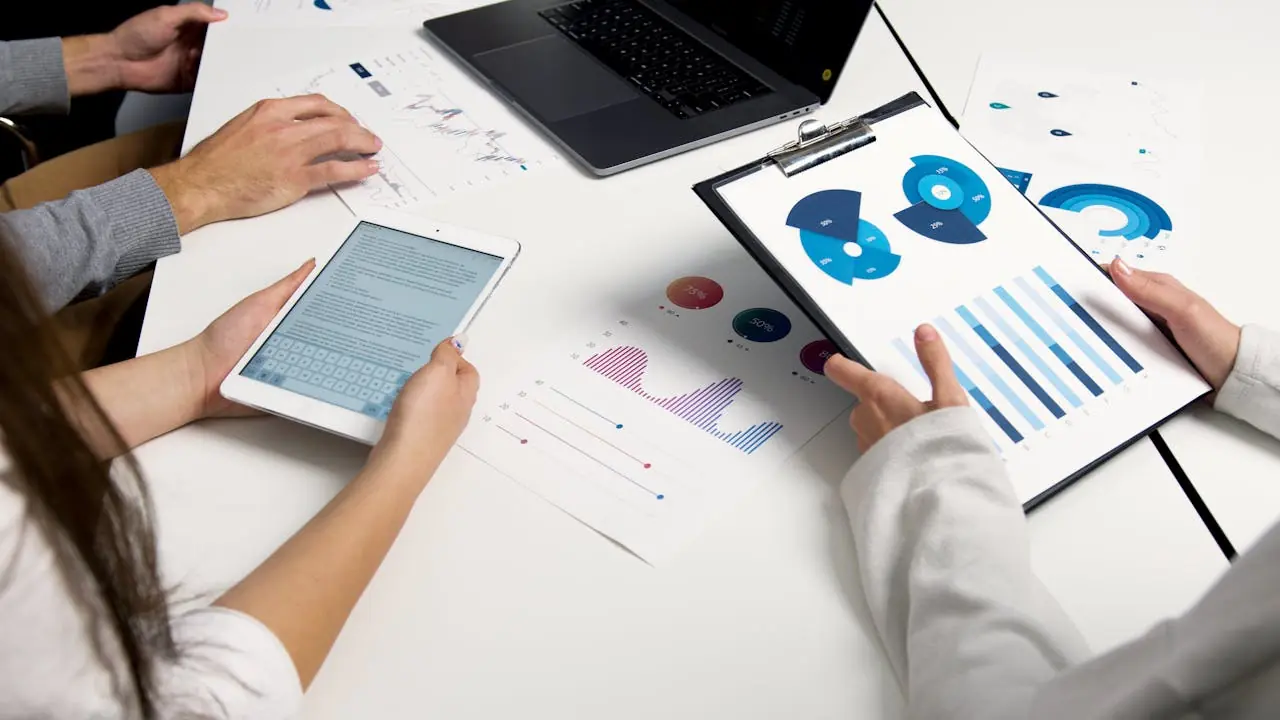HR Analytics: Turning Data Into Workforce Insight

HR has evolved from an administrative function to a strategic powerhouse. The ability to interpret and act on people data, HR analytics is now central to driving business performance.
Using data-driven HR, organizations can predict turnover, identify skill gaps, measure engagement, and make informed talent decisions. This article explores how to build HR data literacy, track meaningful talent metrics, leverage predictive analytics in HR, and turn workforce insights into measurable results.
What is HR Analytics (and Why It Matters)
HR analytics, also known as people analytics or workforce analytics, is the process of gathering and analyzing employee data to improve business outcomes.
Traditionally, HR tracked administrative metrics - headcount, payroll, or time to hire. Today, analytics allows HR to forecast trends and influence strategy. Research shows data-driven HR teams are five times more likely to make faster, better decisions and improve engagement.
Analytics helps HR answer key questions:
- Why are employees leaving?
- Which candidates are most likely to succeed?
- How can we predict future workforce needs?
By measuring impact in financial terms: efficiency, risk, and growth. HR shifts from a support role to a strategic business partner.
Building HR Data Literacy
Analytics tools are powerful, but without data literacy, they’re wasted. HR data literacy is the ability to read, interpret, and communicate data effectively.
The Foundation
HR professionals need to:
- Understand basic statistics and key metrics (turnover rate, cost per hire, engagement scores).
- Translate numbers into business insights.
- Use storytelling to make data relatable—“Our turnover rose 12%, costing the business $500,000 in replacement costs.”
Common Barriers
Many HR departments face:
- Data silos across systems (HRIS, payroll, engagement tools).
- Poor data quality and inconsistent definitions.
- Skills gaps—HR teams unsure how to analyze or interpret data.
Building literacy requires training, governance, and a culture that treats data as a strategic asset. When HR professionals are confident using data, analytics becomes part of daily decision-making.
Key Talent Metrics to Track
Metrics are the foundation of HR analytics. Tracking the right ones reveals workforce insights that guide strategy.
Recruitment Metrics
- Time to hire: How long from posting to offer accepted.
- Cost per hire: Total hiring spend divided by number of hires.
- Quality of hire: Performance, retention, and promotion rates of new hires.
These metrics connect recruitment efficiency to business impact.
Retention and Engagement
- Turnover rate (voluntary vs. involuntary).
- Retention of high performers.
- Engagement scores and sentiment analysis.
Monitoring engagement helps predict performance dips and turnover risks early.
Skills and Future Readiness
- Skills gap analysis: Comparing current vs. future skill needs.
- Internal mobility and learning completion rates.
Organizations strong in skills-based workforce analytics can respond faster to change and future-proof their teams.
The Analytics Maturity Journey
HR analytics evolves through four stages—each more powerful than the last.
- Descriptive analytics: What happened? (e.g., turnover rate).
- Diagnostic analytics: Why did it happen? (e.g., low engagement causes attrition).
- Predictive analytics: What’s likely next? (e.g., forecasted turnover risk).
- Prescriptive analytics: What should we do? (e.g., targeted retention initiatives).
Most organizations stop at descriptive reporting. To gain advantage, HR must advance to predictive and prescriptive analytics, linking insights to business action—such as predicting skill shortages or flight risks before they occur.
How Data-Driven HR Delivers Business Value
Reducing Turnover
By analyzing patterns—manager feedback, tenure, engagement—HR can forecast who’s most likely to leave and intervene early. Companies using predictive analytics in HR have reduced voluntary turnover by over 15% in some studies.
Workforce Planning
Data reveals where future skills gaps exist. HR can prioritize upskilling or internal mobility, ensuring readiness for upcoming business shifts.
Diversity, Equity & Inclusion
Analytics highlights inequities in promotions, pay, or turnover. Measuring DEI over time supports a more equitable and data-driven approach to culture.
Quality of Hire
Correlating candidate sources, onboarding quality, and early performance helps HR pinpoint which channels produce long-term success—optimizing recruitment investment.
Insight: Few HR teams analyze manager data (e.g., feedback frequency, team turnover). Yet this often predicts engagement better than employee metrics alone.
Building a People Analytics Capability
People, Process, Technology
To build scalable analytics:
- Integrate systems (HRIS, ATS, LMS, performance platforms).
- Ensure governance and data privacy.
- Train HR professionals or partner with data teams.
Self-service analytics tools like Power BI or Tableau empower HR to explore trends independently. However, the key is not the technology—it’s embedding analytics into decision-making.
Governance & Ethics
HR data is personal. Ensure transparency, limit bias, and explain how insights are used. Employees should understand what’s measured and why. Ethical analytics builds trust and compliance.
Embedding Analytics in Practice
Analytics should inform every HR process—recruitment, L&D, engagement, and performance. Make it part of regular reviews, not an occasional project.
Designing an Effective HR Dashboard
A good dashboard tells a story, not just shows data.
Best Practices
- Focus on business-aligned metrics (e.g., “Turnover of top performers” vs. “Overall turnover”).
- Use visuals and storytelling—heat maps, trend lines, risk indicators.
- Highlight actionable insights—not just numbers, but what to do next.
Avoid data overload. A few well-chosen metrics that lead to decisions are more powerful than 100 KPIs no one uses.
Common Challenges and Pitfalls
1. Poor Data Quality
If data is inaccurate or incomplete, insights are meaningless. Establish clear definitions and data hygiene practices.
2. Ethical and Bias Risks
Algorithms can unintentionally discriminate. Regularly audit models for fairness and ensure transparency with employees.
3. Resistance to Change
HR professionals may rely on experience over analytics. Overcome this by showing quick wins—use data to solve a pressing issue, then build momentum.
4. Tech Without Strategy
Buying analytics software without training or purpose leads to unused dashboards. Always start with the question: “What decision are we trying to improve?”
Trends Shaping the Future of HR Analytics
- AI and Machine Learning: Advanced models can predict attrition, recommend training, or even identify hidden high performers.
- Real-Time Analytics: With hybrid work, live dashboards on engagement and collaboration are becoming vital.
- Skills-Based Talent Models: Analytics now maps not just roles but the skills powering them, enabling internal talent marketplaces.
- Embedded Insights: Soon, analytics will live inside HR workflows—guiding managers during hiring, promotions, or team planning.
The HR function is moving from reporting the past to designing the future.
Measuring Success
How do you know your analytics program works?
Indicators of Success
- HR uses dashboards regularly (adoption rate).
- Time from insight to action decreases.
- Key outcomes improve (lower turnover, faster hiring).
- Business leaders reference HR data in decisions.
Pro tip: Track both outcomes (e.g., turnover down) and leading indicators (e.g., engagement up). They reveal early signs of success.
Case Study Snapshot
A tech company used predictive analytics to flag employees most likely to resign within six months. After targeted manager coaching and stay interviews, turnover dropped 18% and internal mobility rose 12% in one year. The HR team then replicated the model company-wide, saving over $1M in hiring costs.
That’s the power of connecting people analytics with business action.

















Quick Takeaways
- HR analytics turns people data into business strategy.
- Data literacy is the foundation—tools alone aren’t enough.
- Track metrics that matter: hiring, retention, engagement, and skills.
- Move beyond descriptive reports to predictive analytics in HR.
- Design dashboards that drive decisions, not just display data.
- Prioritize ethics, data quality, and alignment with business goals.
- The future is real-time, skills-based, and AI-enhanced.
